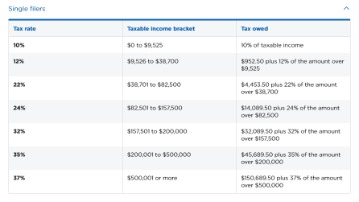
We will analyze and record each
of the transactions for her business and discuss how this impacts
the financial statements. Some of the listed transactions have been
ones we have seen throughout this chapter. More detail for each of
these transactions is provided, along with a few new
transactions. Unreal Corporation received 10,000 as advance from ABC on 1st January for a custom paint job for ABC’s car. The work completed, and the customer was invoiced on 1st February of the same year. Show journal entry for advance received from the customer in the books of Unreal Corp.
The journalized entries are then posted to the general ledger. The journal entry is debiting cash received and credit sales revenue. When the company provides service to the customer, they need to record the sale revenue on the income statement. The amount will depend on the agreed price between customer and supplier.
A properly documented journal entry consists of the correct date, amounts to be debited and credited, description of the transaction and a unique reference number. Common Stock had a credit of $20,000 in the journal entry, and that information is transferred to the general ledger account in the credit column. The balance at that time in the Common Stock ledger account is $20,000.
How Do You Write a Journal Entry?
When you enter information into a journal, we
say you are journalizing the entry. Journaling the
entry is the second step in the accounting cycle. When we introduced debits and credits, you learned about the
usefulness of T-accounts as a graphic representation of any account
in the general ledger.
Major Player in the Medical Data Entry Services Market Witnessing … – Digital Journal
Major Player in the Medical Data Entry Services Market Witnessing ….
Posted: Thu, 31 Aug 2023 13:47:38 GMT [source]
A journal is often referred to as the book of original entry because it is the place the information originally enters into the system. A journal keeps a historical account of all recordable transactions with which the company has engaged. In other words, a journal is similar to a diary for a business. When you enter information into a journal, we say you are journalizing the entry. Journaling the entry is the second step in the accounting cycle. Trade payables are usually accrued during ordinary business and include business supplies and other goods.
Sold Services on Account Bookkeeping Entries Explained
So, for instance, if the period ends on December 31st, you would do the reverse the next day, on January 1st. They’re usually done at the start of a new accounting period. Then at the end of October, you compare the actual cash reserve with the cash reserve shown on the balance sheet. While small businesses and startups might not have difficulty fitting all of their entries in the general journal, that’s not always the case. They are just words that show the double-sided nature of financial transactions. This is where the concepts of debit and credit come to play.

This could be anything from mowing lawns to fixing cars to providing consulting services. It is not taken
from previous examples but is intended to stand alone. When filling in a journal, there are some rules you need to
follow to improve journal entry organization.
Journal Entry for Cash Received for Services Provided
For example, one supplier may have a 30-day credit duration, while another with an established business relationship may give a year for payments to be received. In other words, it’s a way of logging expenses or revenues related to services provided by a business. By accurately recording these transactions with journal entries, businesses can track their expenditure and revenue more efficiently and accurately. The accounts payable process ensures that only legitimate invoices are paid for the correct amounts. An invoice is a document used in commerce to itemize and record goods and services that are offered by a vendor and stating payment terms. The logic behind a journal entry is to record every business transaction in at least two places (known as double entry accounting).
But before transactions are posted to the
T-accounts, they are first recorded using special forms known as
journals. Revenue is one of the most important metrics for any business. It is a measure of the money that a business brings in from its activities which is the selling of goods or services. Businesses track their revenue closely because it can be a good indicator of overall business health. Revenue is usually recorded when the service is provided, rather than when the payment is received.
- So, when you buy goods, it increases both the inventory as well as the accounts payable accounts.
- A journal details all financial transactions of a business and makes a note of the accounts that are affected.
- In other words, a journal is similar to a
diary for a business.
This is posted to the Utility Expense T-account on the debit
side. You will notice that the transactions
from January 3 and January 9 are listed already in this T-account. The next transaction figure of $300 is added on the credit
side.
Journal Entry for Receiving Cash for Service
As you can see, the account name, debit amount, credit amount, and description will all appear. Lastly, we have to translate the changes into debits and credits. We learned that debits increase assets, so cash will be debited for $10,000.
Journal entries help transform business transactions into useful data. This is posted to the Cash T-account on the credit side beneath the January 14 transaction. Accounts Payable has a debit of $3,500 (payment in full for the Jan. 5 purchase). You notice there is already a credit in Accounts Payable, and the new record is placed directly across from the January 5 record. This is posted to the Accounts Receivable T-account on the debit side.
Accounts Payable Journal Entry
Adjusting entries are used to update previously recorded journal entries. They ensure that those recordings line up to the correct accounting periods. This does not mean that those transactions are deleted or erased, though.
Publication Support Services Market Insights Report 2023-2030 121 Pages Report – Benzinga
Publication Support Services Market Insights Report 2023-2030 121 Pages Report.
Posted: Mon, 04 Sep 2023 09:55:14 GMT [source]
Whatever the reason, providing service on credit can be risky for companies. Service revenues can arise from rendering services for cash or on account (on credit) to be collected at a later date. Let’s look at the journal entries for Printing Plus and post
each of those entries to their respective T-accounts. This similarity extends to other retailers, from clothing stores
to sporting goods to hardware. No matter the size of a company and
no matter the product a company sells, the fundamental accounting
entries remain the same. You can see that a journal has columns labeled debit and credit.
Checking to make sure the final balance figure is correct; one can review the figures in the debit and credit columns. In the debit column for this cash account, we see that the total is $32,300 (20,000 + 4,000 + 2,800 + 5,500). straight line depreciation calculator The credit column totals $7,500 (300 + 100 + 3,500 + 3,600). The difference between the debit and credit totals is $24,800 (32,300 – 7,500). Having a debit balance in the Cash account is the normal balance for that account.
When a business returns merchandise to a supplier, the purchases account is credited. When payment is made on a credit account to a supplier, the accounts payable account is debited. Businesses typically track their financial transactions in a record-keeping system known as a general ledger.
